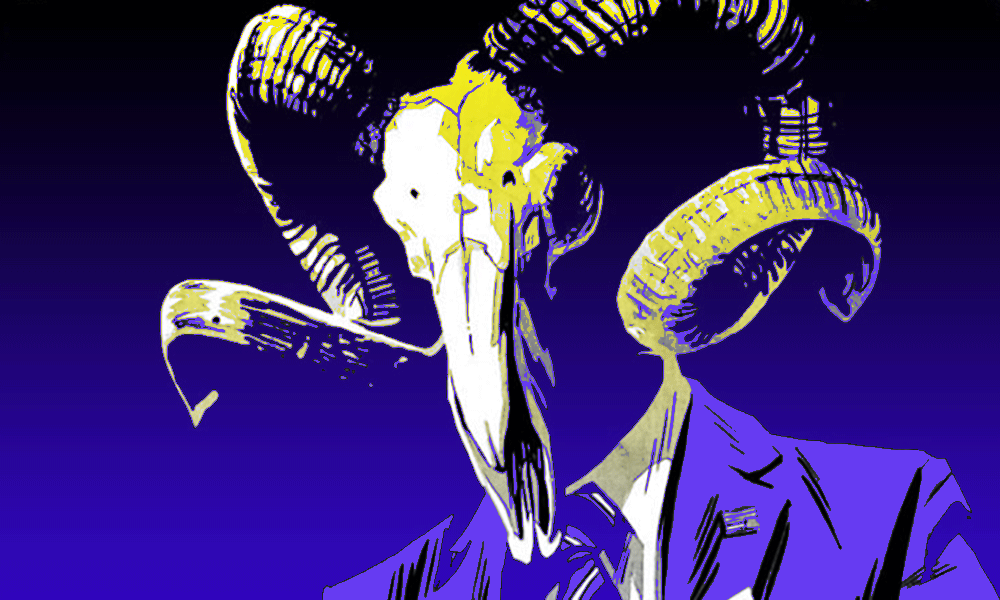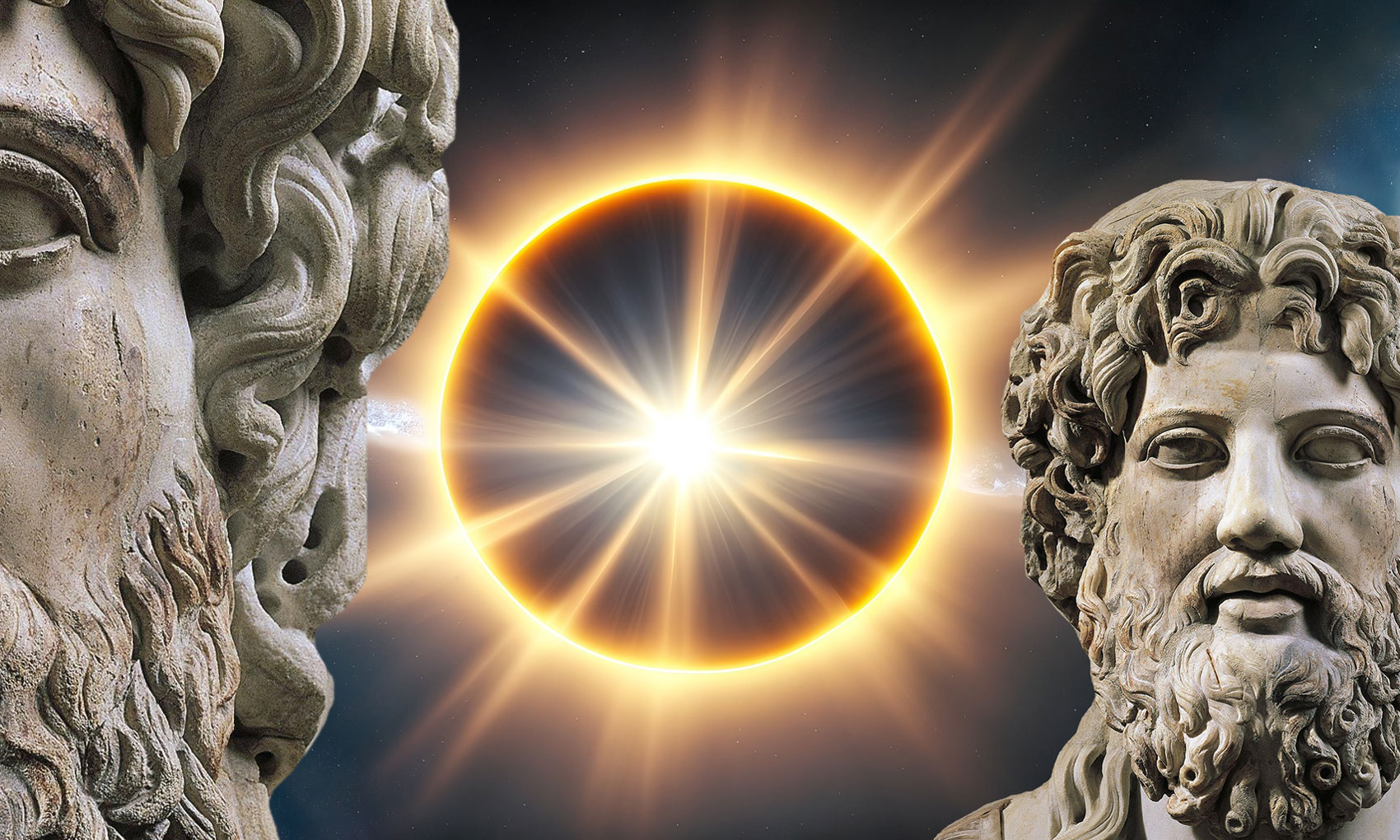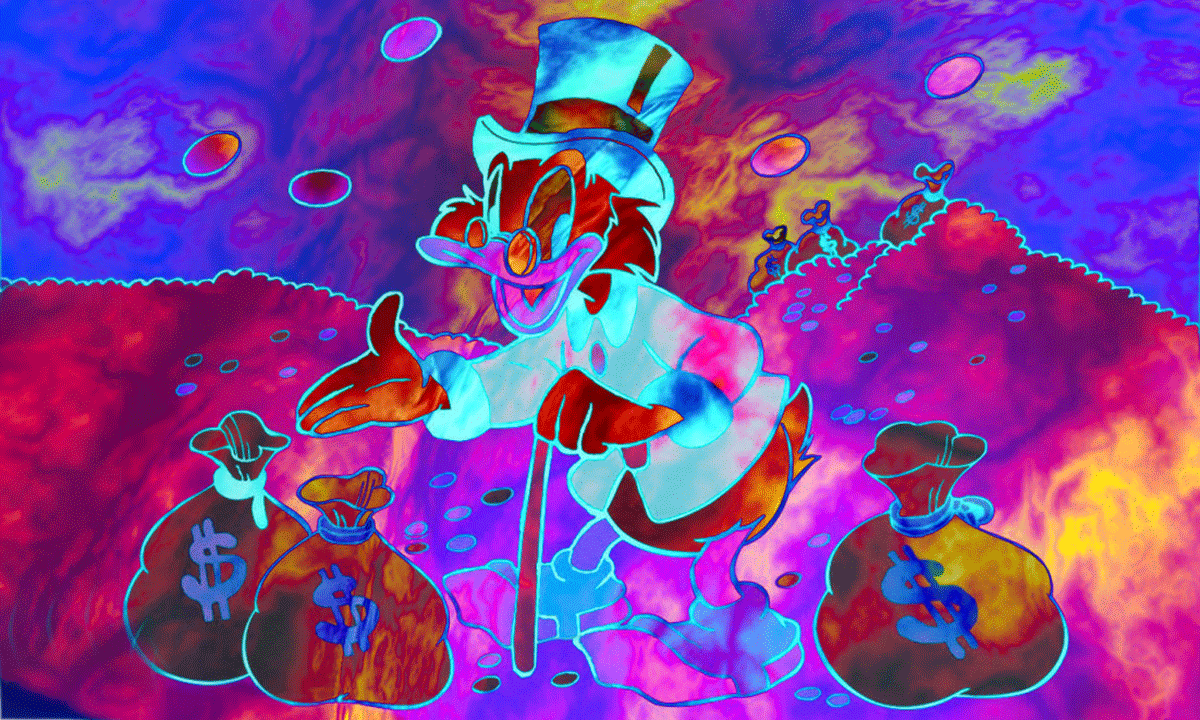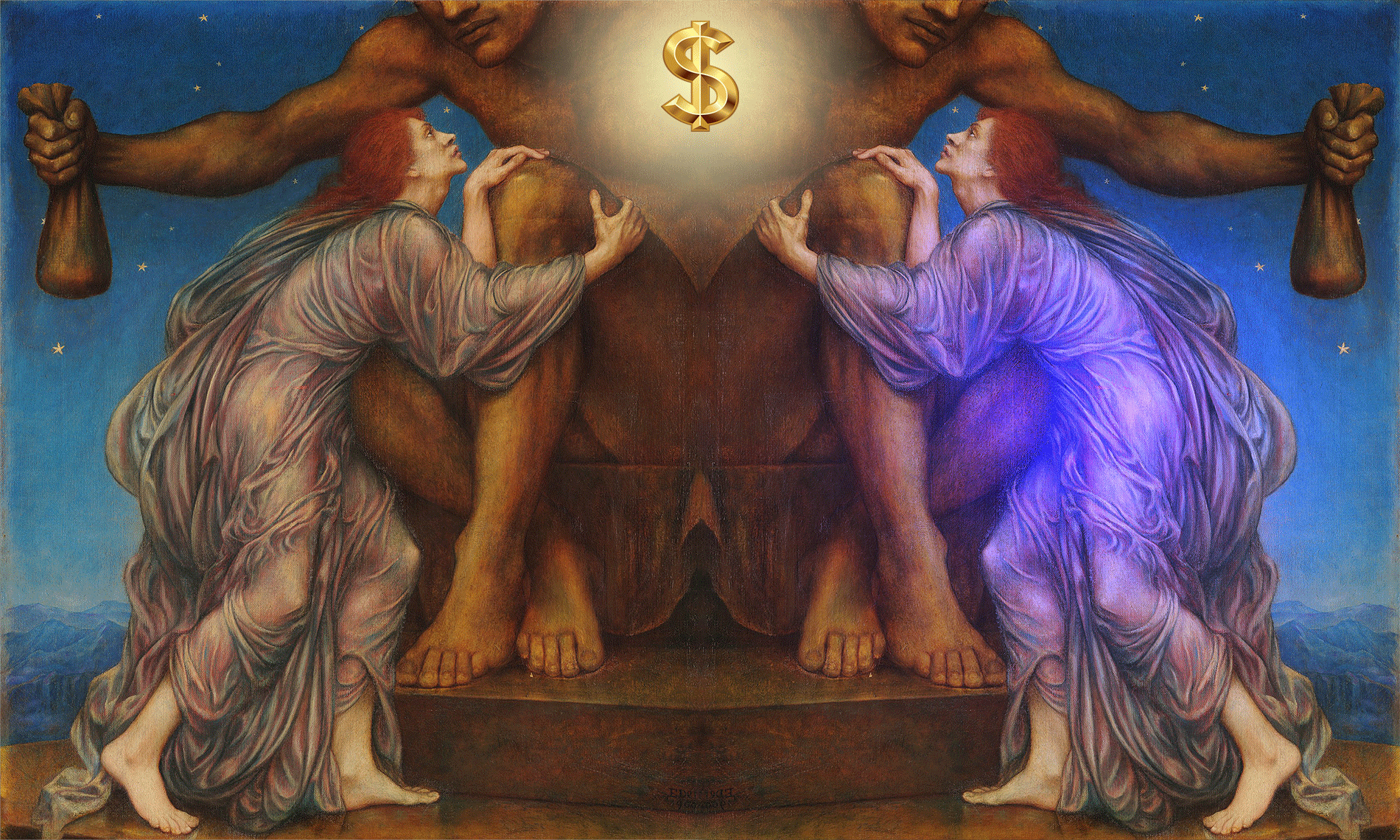
Or God and money… In the New Testament of the Bible, Mammon is commonly translated as money, material wealth, or any entity that promises wealth. It is associated with the greedy pursuit of gain. In the Gospel of Matthew and the Gospel of Luke, Jesus says, “You cannot serve God and Mammon.” This quote is often translated as “You cannot serve God and money”.
Lay not up for yourselves treasures upon earth, where moth and rust doth corrupt, and where thieves break through and steal: But lay up for yourselves treasures in heaven, where neither moth nor rust doth corrupt, and where thieves do not break through nor steal: For where your treasure is, there will your heart be also. No man can serve two masters: for either he will hate the one, and love the other; or else he will hold to the one, and despise the other. Ye cannot serve God and mammon. — Matthew 6:19–21, 24
If Yaldabaoth was once considered the first of the Archons, times have changed. The first today is Mammon, god Cashmoneyprofit. The country of the dollar god wants to be entirely dedicated to the improbable Jesus. The U.S. president himself recites the Our Father in all important circumstances, which does not fail to shock secular France, loyal adept of the separation of powers since the French Revolution.
Seven Deadly Sins
In the New Testament, Mammon is material wealth, a divinity to which men can devote their lives. His worship corresponds to the worship of the golden calf in the Old Testament or in the Torah. In Catholic morality, Mammon is avarice, one of the seven deadly sins. According to Saint Thomas Aquinas: pride, avarice, lust, envy, gluttony, anger, laziness. Each of the seven deadly sins is embodied by one of the Seven Archons.
Mammon would be one of the seven princes of Hell, the Archons. And also one of the four horsemen of Revelation. Why not? I have a penchant for Iblis/Yaldabaoth which embodies the material consciousness of the Archons. Gregory of Nyssa also asserted that Mammon was another name for Beelzebub. A Desert Father sees in him the great Lucifer himself. It is singular, because Lucifer means the bearer of light, and the Gnosis of the first centuries thus designates the Revealer, which was interpreted by Jesus.
This Revelator is designated in the scrolls of Nag Hammadi under the initials XS,oh yes it’s me which the specialists translated as Christos. Double abuse. First, there’s more than one donkey named Martin. Jesus is not the only Christos, they’ve been several, not the least. The title Christos was given to many former gods. It was used long before the Greeks. Second mistake: the manuscripts in question are written in Coptic, not in Greek. And in Coptic, Christos would write XC and not XS. Look at John Lash’s intervention on this. He chose to translate this monogram XS: the Revealer.Well yes, it’s me again. See all that I reveal at length of pages!

The Archon Mammon
Back to the ancient authors who quoted Mammon. For Saint Francesca Romana, Mammon is one of the three princes of Hell, submitted to Lucifer. He presides over the various sins related to the love of money. In his critique of capitalism, Karl Marx also evokes the cult of Mammon. For Jacques Ellul, Mammon is a part of Satan, one of its characteristics, a means of defining it.
Satan, Lucifer, Beelzebub, Yaldabaoth, Iblis, all demons will be seen! What does the name matter? Mammon is an Archon. He carries with him a little of all the Archons. We remember that they are our masters, the tutelary authority of Terra, our planet. For Gnosis, they were our creators. At least the creators of the physical body. They cannot claim the total creation of the human being, because they do not have access to the eternity of the supra-consciousness, resulting from the pleroma. The gift of supra-consciousness comes from Sophia, the Goddess.
In the film Constantine, with Keanu Reeves, Mammon is the son of Lucifer. He tries to take as his host a human with great spiritual power. Thanks to this power that an Archon cannot have, he intends to dethrone his father Lucifer to become lord of Hell and trigger the Armageddon on Earth.
Glory to Mammon
Since the first barters and the creation of money, money has been charged with a real magical power that goes well beyond its market value. Manipulated and fed by a group of individuals venerating Mammon, Prince of Hell and Greed, this power is now at its peak. The first stock market crash of 1929, the first oil shock of 1974, the banking crisis of 2008 … So many events orchestrated by the servants of the Devil to enslave humanity. In the meanders of this occult universe, the investigator tries to decipher the ritualized murder of a great Wall Street figure.
Glory to Mammon, so is the first episode of Black Monday Murders, comics by Jonathan Hickman and Tomm Coker — comics that isn’t exactly comic. No fun in it, but wonders of style and story. Very black as much by his story as by his images — images of incredible graphic perfection — top detailed story, highly documented, very conclusive.
This masterpiece gives a brilliant analysis of the planetary crisis which precipitates the fall of this world obsessed with the pecuniary profit and the systematic exploitation of the peoples. Adding a pure description of the darkness where the Archons dangle the yellow metal. Adding horrible portrait of the few families who are subservient to them. Hickman gives the names of these families, they are known.
It’s creepy to perfection, sinister and cocky delight, crude and harsh. Will the upcoming episodes make love triumph at the end, as it is customary in Hollywood? Frankly I doubt it. Any psychic knows how right I am to doubt it.

Gold Fever
Mammon is alive, he exists in the flesh, the first prince of this material world. He is not eternal, no matter what, his many sons are waiting for his throne. Who tells us that Mammon I still reigns? All his successors are Mammon as the Ancestor. Under their scales, behind their incendiary mouths, in their bellies where the venom and acid gargle, in their frozen heart which beats only by habit, they hate the world which they shape in their image. A world of hatred, contempt, powerlessness and inanimable matter.
The omnipotence of his dynasty is expressed by the subtle blood of this world, money. The intoxication of absolute power over the undead that we are. The pecuniary wealth and the filthy power that it confers. The luxury and enjoyment it gives. Could a god of money be a god of goodness? Of course not.
Some authors like Anton Parks or Zecharia Sitchin seem to think so. The latter speaks at length about it in his book Wandering Planet Nibiru.
The Nibiru Hypothesis
Nibiru is the sumerian name of a wandering planet known to the Romans as Hercolobus, which I identify with Hyperborea. How can a planet be vagabond? Sitchin imagines that Hercolobus Nibiru would return to Earth at regular intervals, losing the rest of the time outside the solar system. In space, no one hears you scream. In the interstellar desert where life is maintained with great difficulty, where matter becomes increasingly scarce, without yet reaching the absolute emptiness. There are always dust, atoms of this or that, seeds even, eggs perhaps? There will always be shipwrecked of time
According to Sitchin, the former gods had to scatter a large amount of gold in the atmosphere of their planet to create artificial light and heat. In order to maintain their atmosphere in the icy intersidal zones, and to keep their wandering planet at a tolerable temperature, they sprayed a fine mist of ionized gold powder to serve as a protective, insulating and wrapping layer. A bold and resolutely unrealistic assumption. I gave another version of the facts in the article The Truth about Nibiru.
The astronaut gods could very well do without gold. The oxidizer used in vimanas and other divine spaceships was mercury. A large amount of this liquid metal was found under one of the Teotihuacan pyramids in Mexico. Were they affected by gold fever? The dragons of our legends are very fond of it. Their main activity is the keeping of gold treasures and jewels. Thieves, in short. But very large in size.

Uribin
Nibiru is one of the names given to the great ship of some 3000km in diameter that gravitated 200km above the north pole. I used to call it Hyperborea, which comes from its Latin name Hyperborea. Why this choice? Because this name means. Hyper, above. Borée, the North Pole. The first testimonies of the existence of this mother ship come to us from the Sumerians who call it Nibiru. Logic would have dictated that I choose that name, which is older. But what held me back, I just said. Hyperborea means, Nibiru means nothing. Apparently.
You know how much I love to play with words and meanings. I am addicted to the language of goslings. To decipher the meaning hidden in this word Nibiru, the verlan is not enough. It is necessary to use a super verlan which consists not in inverting the syllables, but the letters. This strange language was used by Franquin, the brilliant author of the adventures of Spirou and Fantasio, in his albums of Zorglub the villain. His men are the zorglommes, kinds of zombies who speak this language: the zorglangue. If we translate Nibiru into Zorglangue, we get uribin, which decomposes as follows: UR IB IN.
Ur, so is called the planet of origin of the Goddess, under the sun of Alcor in the Big Dipper. So Ur is also the home port of the great ship. Ib is a Latin particle found in ibidem, same place, right here. Ib will therefore translate by place. In Latin means in, in. Uribin means Ur is in this place. This wandering planet is an emanation, a concentrate, a representation of the planet Ur.
The Romans gave it another name, Hercolobus. The language of the Oisons would translate the Herculean bus.
The syllable of ORigin
The old gods didn’t care about the dirty money… but they loved or, gold. Whatever the reason and use they make, this magical syllable, OR, UR, ER, is found insistently in almost all the names of places and gods before. UR, this is the name of the planet of origin of our Good Mother, Ana of AlcOR in the Great OURse.
The fORmer gods: HathOR , ThOR, BelphegOR, ORpheus, TerpsychORe, CastOR, ORion, SatURn, MercURe, URanus, HURacan, URanie, OURanos, OURagan / HURricane, DouaOUR, HedjOUR, KemOUR, WadjOUR, OURet-Hekaou …
The places they frequented: URals, UR in Chaldea, URuk, URgüp, AngkOR, BORobudUR, GomORrha, BangalORe / BengalURu, etc
The qualities linked to them: glORy, vigOR, victORy, splendOR, wORship, adOR, implORe, endURe, priOR, honOUR / honOR, accURate, predatOR, terrOR, sORcERER, warriOR, healER, doctOR, teachER, educatOR, drivER, instructOR, farmER, wORkER, tutOR, etc
It is also found in their technological weapons: ExcalibUR, DURandal, URanium, ArmOR, etc
Definitely the fORmer gods, OUR creatORs, the terrafORmers of OUR wORld, came from the planet UR under the star AlcOR, URsa MajOR.

Presence of Mammon
In the Old Testament:
Word belonging to the Jewish and Judeo-Christian language, mammon is the European, Hebrew or Aramaic transcription of the Greek word mamônas, probably derived from the Hebrew root amên (which is faithful, sure). In the Old Testament he is only found in the Ecclesiastic (xxxi, 8). Mammon is found in Qumran, in Hebrew, in the Rule of the community (vi, 2) and in the Damascus Writing (xiv, 20), where it refers to money.
In the New Testament:
Mammon appears in Matthew (vi, 24) and in Luke (xvi, 9, 11 and 13). In late Judaism, in Hebrew or Aramaic, mammon refers to wealth or gain, often ill-gotten. It appears in the Talmud of Babylon and in the targums, where it has the sense of profit or money. In the Palestinian targum of the Pentateuch, it serves to render (Genesis, xxxiv, 23) the original word, Hebrew, «cattle» (the wealth of the farmer). It is frequently found in the Talmud of Palestine. It is also found in apocalyptic literature, especially in the Ethiopian Enoch, where it signifies the illusory safety of this world.
In the Gospel of Matthew (vi, 24, “You cannot serve God and Mammon”), the term is, in the mouth of Jesus, almost personified and identified with a demonic power. (source: Encyclopædia Universalis)
Nowaday, Mammon is everywhere … Don’t you see he became the prominent god ever?
The Trinity of Mammon
According to the Book of Acts, the holy trinity of the disciples of Mammon is Profit, Money, the Devil.
In the mouth of Jesus, Mammon is quite personified. It is the tempting devil who takes Jesus to the top of a mountain to tempt him. Do you want to possess the world and its riches? I give them to you, said Mammon. Jesus does not care. He came to the desert to meditate, and Mammon is not his friend. He knows the Archons, their temptations and their filthy hypnotic magic. He frequently denounces it. When he shouts against the Magicians, Jesus speaks of the Archons. Gnostic and disciple of his brother Jacques, Jesus knows the subject by heart. Temptations are numerous throughout the canonical or apocryphal gospels: by Satan, Beelzebub, Lucifer, Sheitan, Iblis, Sabaoth, Ialdabaoth… and Mammon. What labels for the same bottle!
“Solo Mammona cogitant, quorum Deus est sacculus” (lit. They think only of Mammon, whose God is the purse) The money that leads the world brings humanity back to its only material dimension. This is the work of the Archons, princes of matter. Princes of calculation to count the ingots. Princes of darkness where they hide their treasures. Princes of the astral too, alas!



